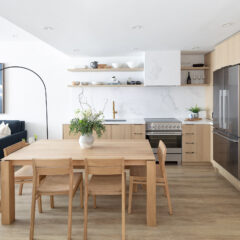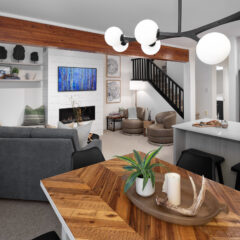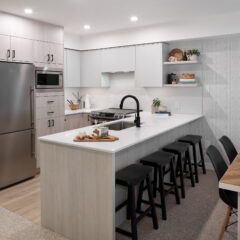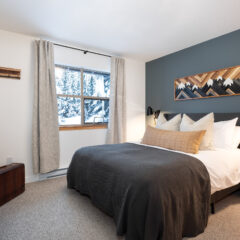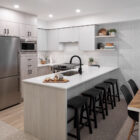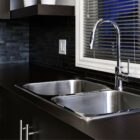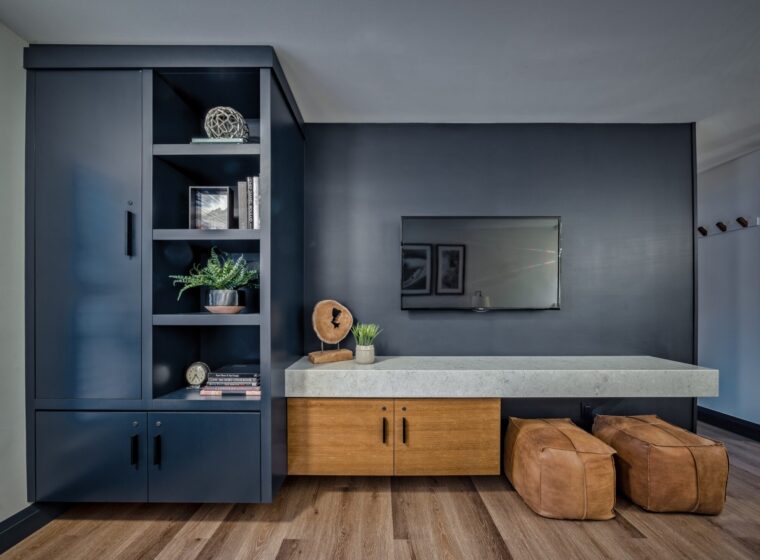When it comes to choosing the right look for your bathroom, walls are one of the most important elements. But how do you choose?
In this blog post, we’ll explore some of the most popular bathroom wall options and provide you with advice on how to find the one that works best for your home. We’ll look at the various types of wall options, their positives and negatives. By the end of this guide, you’ll be able to confidently choose a wall option for your bathroom renovation project that fits both your tastes and budget.
So let’s start exploring all the wonderful ways you can finish off your bathroom walls!

- Ceramic tile
- Porcelain tile
- Vinyl wallpaper
- Paint
- Glass time
- Stone tile
- Acrylic
- Microcement
- Brick
- Cork
- Wood
- PVC panels
What to consider when choosing a bathroom wall
It’s important to make sure that whatever you decide on is waterproof and can withstand humidity well; otherwise, you may end up dealing with mold or mildew issues in the future. Additionally, it’s essential to understand how each type of material should be installed in order to ensure that it lasts as long as possible.
Selecting the ideal wall material for your bathroom should not be taken lightly. You want something that is both aesthetically pleasing and practical enough to meet your needs. Don’t rush this process.
Most importantly, you need to understand how your bathroom will be used. Are you remodeling your guest room bathroom that gets maybe 5 visits a month? Or a bed and breakfast bathroom that gets used heavily every day? The level of durability should be your primary factor. That will help you decide on the material.
Further consider color and texture. These two elements have an aesthetic and emotional influence.
Think about maintenance requirements. How easy is the material to clean?
Don’t forget about water resistance. Does the wall material protect from moisture damage?
And lastly, ponder pricing. Determine how much money you want to spend on your home renovation project.
Home is a place to find happiness. If one doesn’t find it here, one doesn’t find it anywhere
M.K. SONI
Ceramic tiles bathroom wall
Ceramic tile is a classic. It’s stylish, but also very durable and easy to clean. Perfect for any home. Why do we love it?
Advantages:
- Durability: Ceramic tile is durable and can withstand heavy foot traffic, making it a good choice for high-traffic areas.
- Affordability: Ceramic tile is an affordable flooring option that is available in a wide range of styles and colors, making it a popular choice for those on a budget.
- Versatility: Ceramic tile comes in a wide range of colors, patterns, and textures, making it a popular choice for those who want a variety of design options.
- Low maintenance: Ceramic tile is easy to clean and requires minimal maintenance. It is resistant to stains and scratches, and regular cleaning with a mild detergent and water is all that is needed to keep the tiles looking like new.
Disadvantages:
- Porousness: Ceramic tile can be porous, which can make it prone to staining and water damage. Glazed ceramic tile is less porous than unglazed tile, but it does require maintenance.
- Hardness: Ceramic tile is very hard and can be difficult to cut, which can make installation more challenging.
- Slipperiness: Some types of ceramic tile can be slippery when wet, which can be dangerous in certain areas like bathrooms.
- Fragility: Ceramic tile is brittle and can crack or chip if something heavy is dropped on it.
Overall, ceramic tile is a good choice for those who want a durable, versatile, and affordable flooring option that offers a wide range of design options. However, it may not be the best choice for those who want a water-resistant or slip-resistant option, or for those who want a more durable material that is less prone to chipping or cracking.
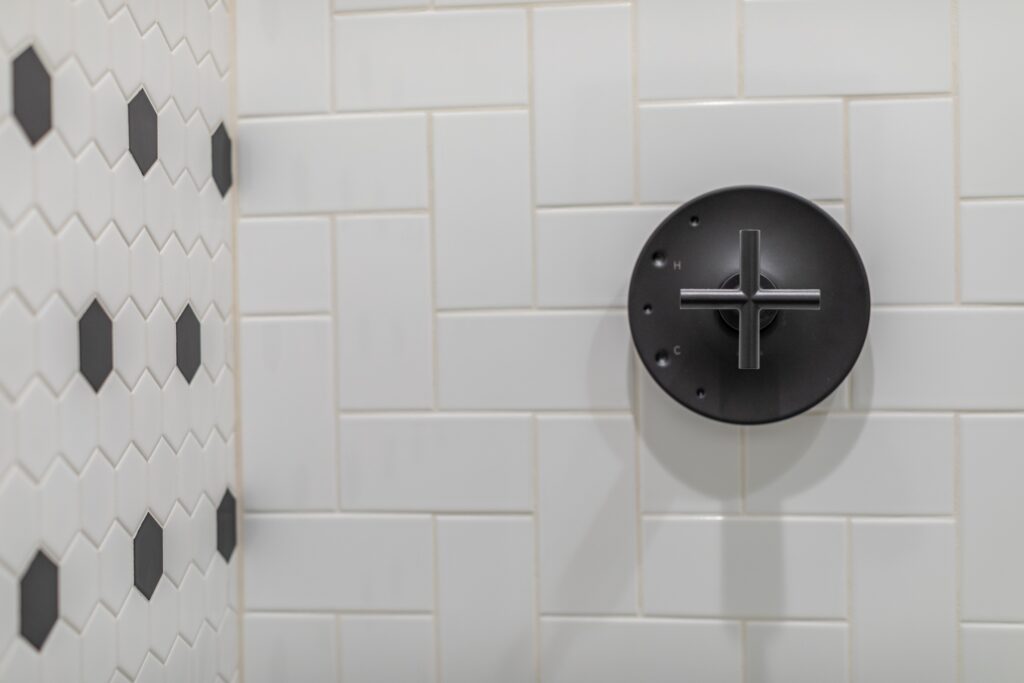
Porcelain tiles
Porcelain tile is a type of ceramic tile that is made from a dense clay that is fired at high temperatures. It’s low maintenance and extremely durable — it can even stand up to moisture better than ceramic tile. Plus, its sleek, modern appearance gives any bathroom a unique touch of sophistication that you won’t get from any other material.
Advantages:
- Durability: Porcelain tile is extremely durable and can withstand heavy foot traffic, making it a good choice for high-traffic areas.
- Water resistance: Porcelain tile is highly resistant to water and moisture, making it an ideal choice for use in bathrooms, kitchens, and other areas where water is present.
- Low maintenance: Porcelain tile is easy to clean and requires minimal maintenance. It is resistant to stains and scratches, and regular cleaning with a mild detergent and water is all that is needed to keep the tiles looking like new.
- Versatility: Porcelain tile comes in a wide range of colors, patterns, and textures, making it a popular choice for those who want a variety of design options.
Disadvantages:
- Cost: Porcelain tile can be more expensive than other types of tile, especially if you choose high-end materials or intricate designs.
- Slipperiness: Some types of porcelain tile can be slippery when wet, which can be dangerous in certain areas like bathrooms.
- Installation: Porcelain tile is hard and heavy and requires special tools and techniques for installation, which can make it a difficult DIY project.
Overall, porcelain tile is a good choice for those who want a durable, water-resistant, and low-maintenance flooring option that offers a wide range of design options. However, it may not be the best choice for those on a tight budget or those who want an easy DIY project.
Vinyl wallpaper
Vinyl wallpaper is an affordable and stylish way to upgrade your space while making sure it stays comfortable. Plus, it’s incredibly easy to install!
Advantages:
- Moisture-resistant: Vinyl wallpaper is moisture-resistant, making it a suitable option for bathrooms where there is high humidity or moisture levels.
- Durable: Vinyl wallpaper is durable and can withstand wear and tear, making it less prone to scratches or dents than painted walls.
- Easy to clean: Vinyl wallpaper is easy to clean with a damp cloth, making it a low-maintenance option for bathrooms.
- Wide range of designs: Vinyl wallpaper comes in a wide range of designs and colors, making it easy to find an option that matches the existing decor or design theme of the bathroom.
Disadvantages:
- Difficult to remove: Removing vinyl wallpaper can be a difficult and time-consuming task, especially if it has been applied with strong adhesive.
- Not as customizable: Unlike painting, vinyl wallpaper cannot be easily customized in terms of color or texture, making it more difficult to match or complement the existing decor or design theme of the bathroom.
- Installation: While vinyl wallpaper is relatively easy to install, it requires more preparation and attention to detail than painting, as any bumps or bubbles can be difficult to remove once the wallpaper has been applied.
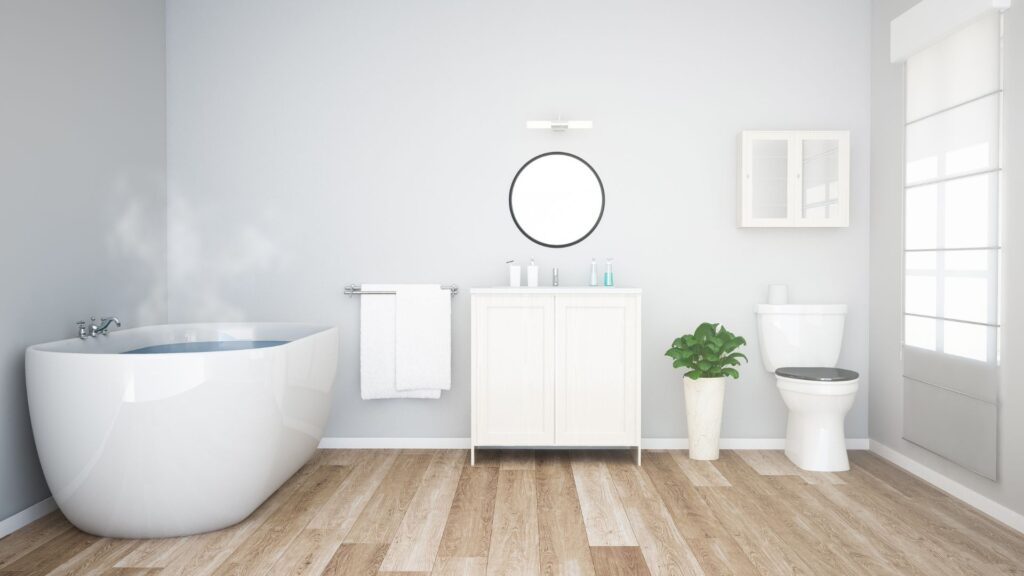
Painted bathroom walls
Paint is a great choice for any homeowner looking for an easy and affordable way to spruce up their walls. Paint gives you the opportunity to customize your walls with any color or pattern of your choice. Plus, you have the ability to change it up whenever you feel like it!
Advantages:
- Cost-effective: Painting the walls is an affordable way to update the look of a bathroom, as compared to more expensive options such as tiling or installing new wall coverings.
- Customization: Painting the walls allows for customization of the color and texture of the walls, making it easier to match or complement the existing decor or design theme of the bathroom.
- Easy to apply: Painting is a relatively straightforward DIY project that can be completed with minimal tools and materials, making it an accessible option for those with basic handyman skills.
Disadvantages:
- Moisture and humidity: Bathrooms are prone to moisture and humidity, which can cause paint to peel, bubble, or discolor over time. This can require more frequent repainting or maintenance to keep the walls looking good.
- Mold and mildew: Bathrooms are also prone to mold and mildew growth due to the high moisture levels, and painting over existing mold or mildew can result in health hazards or a shorter lifespan for the paint job.
- Durability: Painted walls may not be as durable as other wall coverings, and can be easily scratched, chipped, or scuffed, especially in high-traffic areas.
Glass bathroom tile
Adding a touch of glass tile to my bathroom walls can give my home a unique, polished look. The glass tile provides an eye-catching, shimmery upgrade that’s sure to be the envy of the neighborhood. From classic subway tiles to intricate mosaics, there are plenty of options available to choose from.
Advantages:
- Aesthetically pleasing: Glass tile has a unique and contemporary look that can add a modern and elegant touch to a bathroom.
- Durable: Glass tile is durable and resistant to moisture, making it a suitable option for bathrooms where there is high humidity or moisture levels.
- Easy to clean: Glass tile is easy to clean with a damp cloth or non-abrasive cleaner, making it a low-maintenance option for bathrooms.
Disadvantages:
- Expensive: Glass tile can be more expensive than other options for covering bathroom walls.
- Installation: Installing glass tile requires specialized tools and skills, and can be a time-consuming and challenging process.
- Prone to cracks and chips: Glass tile is prone to cracking or chipping, especially in high-traffic areas or if heavy objects are dropped on it.
- Slippery: Glass tile can be slippery when wet, which can be a safety hazard in a bathroom, especially in a shower or bathtub area. It is important to choose a textured or slip-resistant glass tile to prevent accidents.
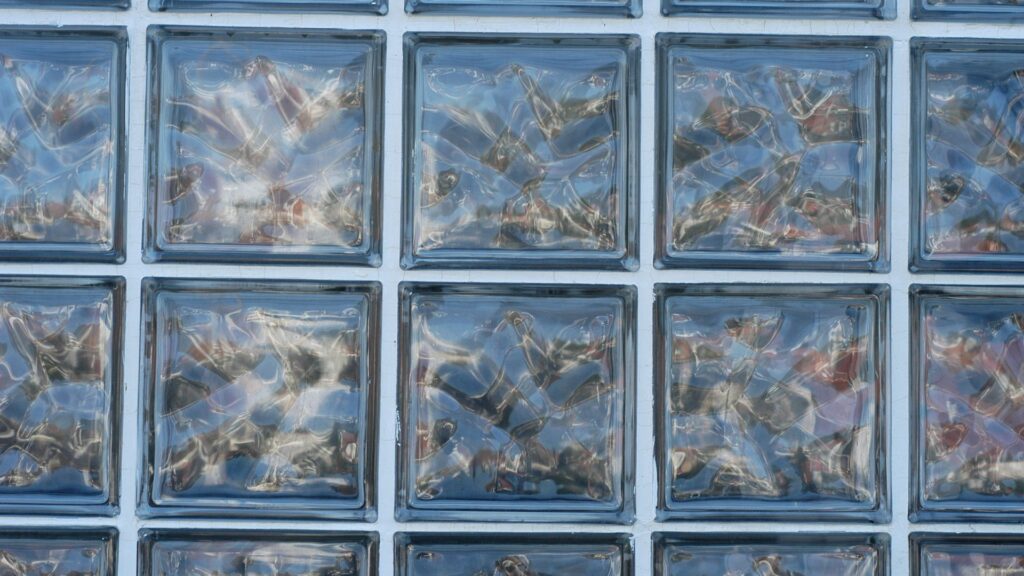
Stone tile
Stone tile is an attractive option for bathroom walls. A huge variety of styles, colors and sizes can be found to match any aesthetic. Plus, it can be used as flooring too!
Though this may seem like a great idea at first glance, there are some drawbacks to consider. Stone tile can be expensive and difficult to install correctly. Plus, if not sealed properly, the grout lines between each tile can become stained by moisture over time.
Advantages:
- Durability: Stone tile is extremely durable and can withstand heavy foot traffic, making it a good choice for high-traffic areas.
- Aesthetically pleasing: Stone tile comes in a variety of colors, patterns, and textures, making it a popular choice for those who want a natural and sophisticated look in their home.
- Low maintenance: Stone tile is easy to clean and requires minimal maintenance. Regular cleaning and occasional sealing can help keep the tiles looking like new.
- Resistant to moisture: Stone tile is resistant to moisture, making it ideal for use in bathrooms and other areas where water is present.
Disadvantages:
- Cost: Stone tile can be expensive, especially if you choose high-end materials like marble or granite.
- Porousness: Some types of stone tile can be porous, which can make them prone to staining and water damage. Sealing the tiles can help prevent this, but it does require maintenance.
- Slipperiness: Stone tile can be slippery when wet, which can be dangerous in certain areas like bathrooms.
- Installation: Stone tile is heavy and requires special tools and techniques for installation, which can make it a difficult DIY project.
Acrylic
When it comes to bathroom wall options, acrylic is an attractive and practical choice. It’s a versatile material that can be made to look like many other materials like stone tile, but without the same weight or expense. It’s also much easier to install and maintain than stone tile.
Acrylic has some distinct advantages over its competitors.
- Affordable: For one thing, it’s more affordable than other materials and offers greater design flexibility.
- Customizable: You can choose from a wide range of colors, textures, patterns, and finishes to make your bathroom walls unique.
- Water resistantn: Plus, because it’s non-porous, acrylic resists mold and mildew better than other materials – making it great for humid bathrooms.
Acrylic also has some drawbacks.
- Maintenance: It ay require frequent cleaning and maintenance to keep it looking its best.
- Durability: It’s also not as durable as other materials, such as glass or tile, so it may need to be replaced more frequently.
- Insulation: Additionally, it’s not a good insulator, so it won’t help to keep your bathroom warmer.
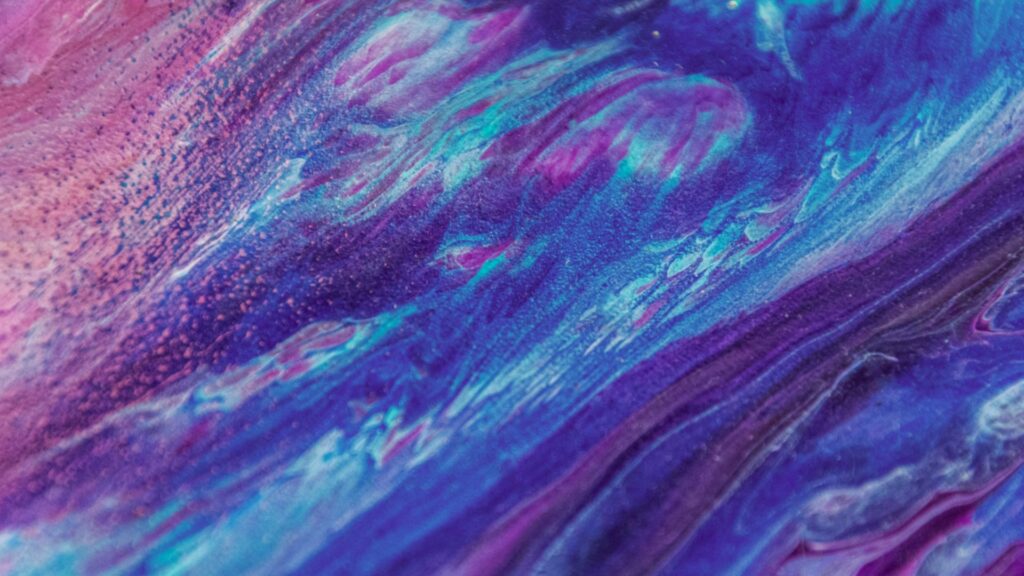
Microcement
Microcement is a type of cement-based micro-mortar that is applied in multiple thin layers, making it waterproof and durable. Plus, its finish gives off an elegant, contemporary vibe.
Advantages:
- Aesthetic appeal: Microcement has a contemporary and stylish appearance that can transform any space. It is available in a variety of colors and can be applied in various finishes, including matte, satin, and gloss.
- Versatility: Microcement can be applied over a wide range of surfaces, including tiles, concrete, wood, and even metal. It is suitable for both interior and exterior applications.
- Durability: Microcement is highly durable and resistant to wear and tear, scratches, and stains. It is also waterproof and can be used in wet areas like bathrooms and kitchens.
- Easy maintenance: Microcement requires minimal maintenance, and it can be easily cleaned with water and a mild detergent. It does not require sealing or polishing, which makes it a low-maintenance option.
Disadvantages:
- Cost: Microcement can be expensive compared to other coating options, especially if you choose high-end materials or hire a professional installer.
- Application process: Microcement is a specialized product that requires skilled installers to achieve the desired finish. It involves several layers of application, which can take several days to complete.
- Fragility: While microcement is highly durable, it can still be prone to cracking and chipping if the underlying surface is not stable or if heavy objects are dropped on it.
- Slipperiness: Microcement can be slippery when wet, which can be dangerous in certain areas like bathrooms and pool decks.
Microcement provides an aura of luxury and sophistication that will instantly elevate the atmosphere in any room.
Brick
Brick is a popular building material that has been used for centuries. It is made by firing clay or a clay mixture in a kiln until it is hard and durable. Here are some advantages and disadvantages of using brick:
Advantages:
- Durability: Brick is highly durable and can last for centuries. It is resistant to fire, wind, and moisture, making it a popular choice for buildings in areas with extreme weather conditions.
- Low maintenance: Brick requires minimal maintenance and can be easily cleaned with water and a mild detergent. It does not need to be painted or sealed, which makes it a low-maintenance option.
- Energy efficiency: Brick has excellent thermal mass, which means it can absorb and store heat from the sun during the day and release it slowly at night. This helps to regulate indoor temperatures and reduce energy costs.
- Aesthetic appeal: Brick has a timeless and classic appearance that can add character and charm to any building. It is available in a variety of colors, sizes, and textures, which makes it a versatile option for a range of architectural styles.
Disadvantages:
- Cost: Brick can be expensive compared to other building materials, especially if you choose high-end or custom options.
- Installation process: Brick is heavy and requires skilled installers to ensure proper installation. It involves several steps, including laying the foundation, building the walls, and finishing the mortar joints.
- Limited design options: While brick is available in a variety of colors and textures, it may not offer the same design flexibility as other materials like concrete or glass.
Overall, brick is a good choice for those who want a highly durable, low-maintenance, and energy-efficient building material with a classic and timeless appearance. However, it may not be the best choice for those on a tight budget or those who want a more flexible design option. Additionally, it is important to hire a professional installer with experience in brick to ensure proper installation and stability.
Cork
Cork is a great choice for your bathroom wall! It’s a natural, renewable material that is also eco-friendly. Plus, it has an attractive and unique style that will make your room stand out. Here are a few reasons why you should consider cork for your bathroom walls:
Advantages:
- Aesthetics: Cork adds texture and color to the room – A cork wall can bring warmth and personality to any bathroom. The unique natural patterns in the cork give it an inviting and cozy feel.
- Moisture resistance: One of the best things about using cork in the bathroom is its ability to resist moisture. This makes it perfect for high-humidity areas like showers or bathtubs because it won’t absorb water like other materials might.
- Maintenance: Cork is easy to clean – All you need is a damp cloth and some mild soap to get rid of dirt and grime buildup. And since it’s naturally antimicrobial, it helps prevent bacteria from growing on the surface too!
List also cork disadvantages:
- Cost: Cork can be expensive – Cork is a relatively expensive material, so using it for a full wall might be cost-prohibitive for some.
- Durability: Cork is not scratch-proof – While cork is durable, it can still scratch or dent over time if not taken care of properly.
- Look: Cork doesn’t always look great when wet – While cork is moisture resistant, it can still look distorted or discolored when wet. This means it might not be the best choice for areas like showers or bathtubs.
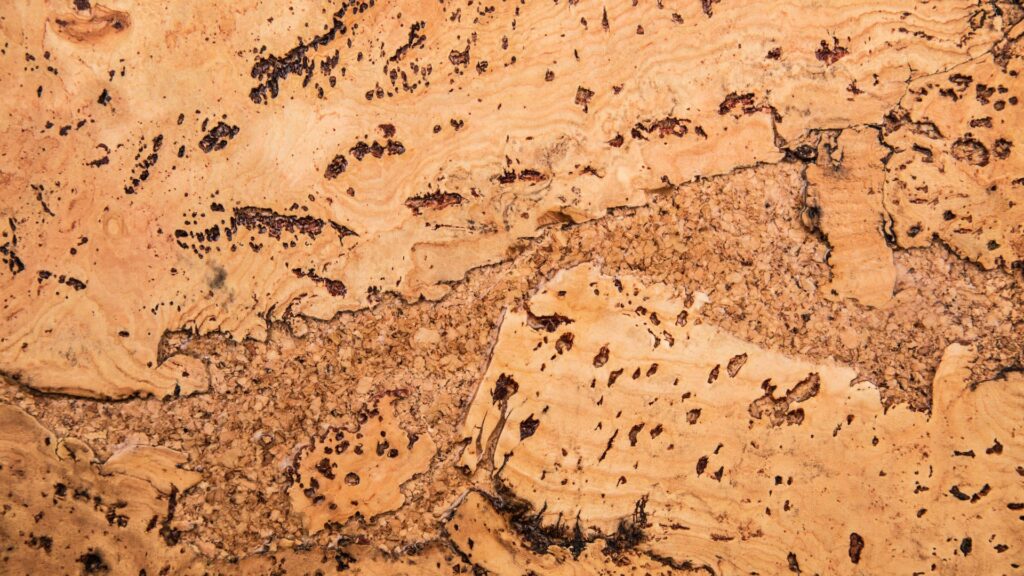
Wood
Wood does bring out a sense of comfort and connection to the natural world, but it also adds warmth and style to the room. But before you rush into making this choice, there are a few important things to consider.
Advantages:
- Aesthetic appeal: Wood has a warm and natural appearance that can add character and charm to any building. It is available in a variety of colors and textures, which makes it a versatile option for a range of architectural styles.
- Sustainability: Wood is a renewable resource that is harvested from responsibly managed forests. It is also biodegradable and can be recycled or repurposed at the end of its life.
- Energy efficiency: Wood has excellent insulating properties, which means it can help to regulate indoor temperatures and reduce energy costs.
- Versatility: Wood can be used for a variety of building applications, including framing, flooring, siding, and roofing. It can also be easily shaped and cut to create custom designs and finishes.
Disadvantages:
- Durability: Wood can be vulnerable to rot, insects, and moisture damage, which can affect its durability and lifespan. However, treated or engineered wood products can help to improve durability and resistance.
- Maintenance: Wood requires regular maintenance, including staining, sealing, or painting to protect it from the elements and preserve its appearance. It can also be prone to warping or splitting if not properly maintained.
- Fire hazard: Wood is a flammable material that can be a fire hazard if not properly treated or protected. However, treated or engineered wood products can help to improve fire resistance.
- Cost: Wood can be expensive compared to other building materials, especially if you choose high-end or custom options.
PVC panels
PVC panels offer excellent water resistance and protection from mold, as well as a contemporary aesthetic that is sure to make your bathroom look great. Plus, they’re incredibly easy to install.
Advantages of PVC Panels for Bathroom Walls:
- Easy to install: PVC panels are easy to install and require minimal effort and time.
- Waterproof: PVC panels are waterproof, making them the perfect choice for wet room and bathroom walls.
- Durable: PVC panels are highly durable and can last for many years.
- Low maintenance: PVC panels require minimal maintenance and can be easily wiped clean.
- Low cost: PVC panels are relatively inexpensive when compared to other wall coverings.
Disadvantages of PVC Panels for Bathroom Walls:
- Susceptible to mold: PVC panels can be susceptible to mold growth if not installed properly.
- Not eco-friendly: PVC is a type of plastic and is not an eco-friendly material.
Stone slab
If you’re looking to create a luxurious and timeless look in your bathroom, then stone slab walls are the perfect solution! Not only are they incredibly stylish, but they also provide a sense of security.
Advantages:
- Durability: Stone slabs are extremely durable.
- Insulating: Plus, the natural warmth of the stones helps keep your bathroom warm during cold cold days.
What are disadvantages of stone slab
- Cost: Stone slabs are often more expensive than other materials like tile, laminate or vinyl.
- Weight: Stone slabs are heavy and difficult to install, which makes them more expensive to install.
- Maintenance: Stone slabs require regular maintenance to keep them looking their best. Sealing, polishing and cleaning are all necessary tasks that must be done on a regular basis.
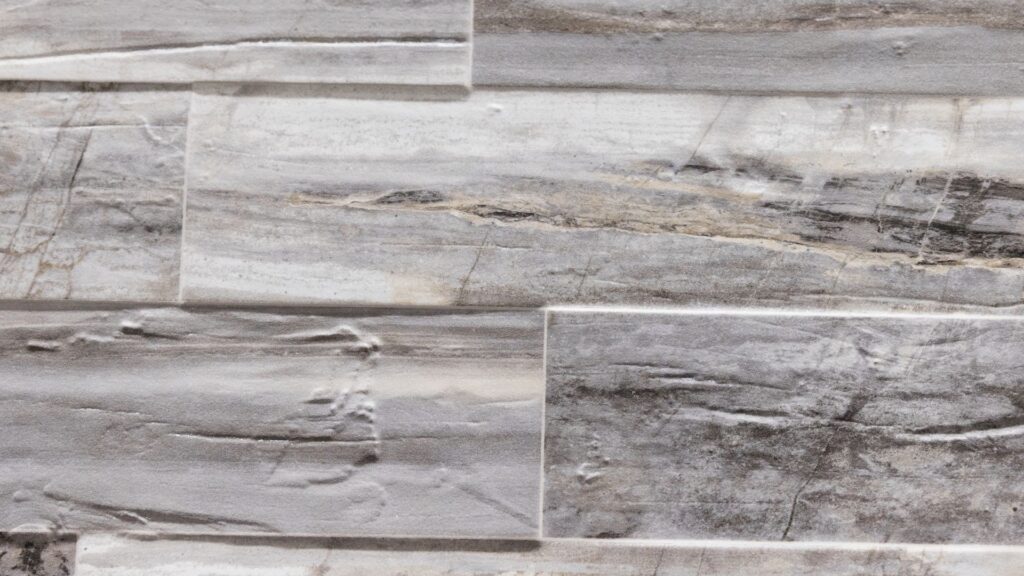
How to maintain your bathroom wall
One of the best ways to ensure your bathroom walls remain in excellent condition is to maintain them regularly. Maintaining your bathroom walls is important for both the aesthetic appeal of your space and for preventing the growth of mold and mildew. Here are some tips for keeping your bathroom walls clean and well-maintained:
Regular cleaning: Regular cleaning is essential to keep your bathroom walls free of dirt and grime. You can use a mild detergent or a specialized bathroom cleaner to wipe down the walls with a sponge or soft cloth. Avoid using abrasive or harsh cleaners that could damage the surface of the walls.
Drying: After taking a shower or bath, use a towel to dry off the walls. This will prevent water droplets from leaving behind unsightly water spots or causing damage to the walls over time.
Squeegee: Another effective way to prevent water spots on your bathroom walls is by using a squeegee to remove excess water after a shower or bath. This is particularly useful for tiled walls, as the grout between tiles is vulnerable to water damage.
Ventilation: Good ventilation is important for preventing moisture buildup in your bathroom, which can lead to the growth of mold and mildew. Make sure your bathroom has a working exhaust fan and open a window if possible to promote airflow.
Repairs: Any cracks or holes in your bathroom walls should be repaired promptly, as they can provide a breeding ground for mold and mildew. Small cracks can be filled with caulk or sealant, while larger repairs may require the help of a professional.
Paint: If your bathroom walls are painted, use a paint that is designed for use in high-moisture environments. This will help prevent moisture from seeping into the walls and causing damage or mold growth.
Conclusion
Choosing the right bathroom wall material is crucial for creating a functional and beautiful space. Factors like durability, maintenance, style, and budget should be considered when selecting the right material.
Ultimately, your personal style, budget, and functional needs will dictate the best material for your bathroom walls. Work with a knowledgeable contractor or designer to make the right choice for your unique space.
Contact us today to schedule a consultation and learn more about how we can help you improve the comfort and value of your home.



